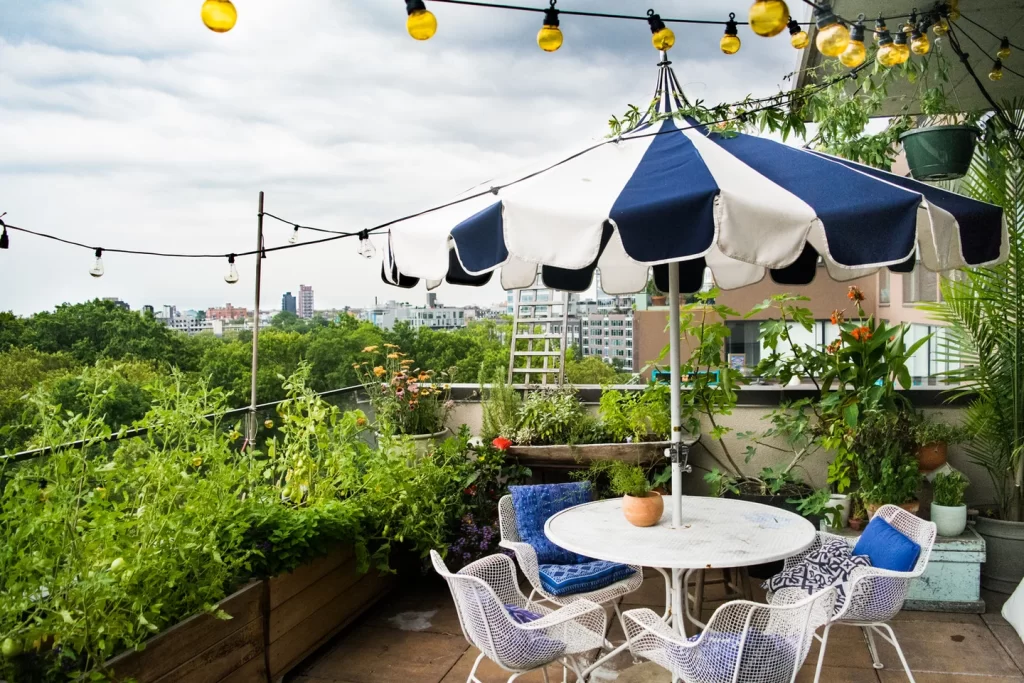Urban gardening can be great for both the environment and children alike, giving them an appreciation of where food comes from. They can cultivate healthy vegetables and flowers in gardens or rooftop spaces alike.
Your greenery also provides your children with exercise and social interaction opportunities, contributing to their mental wellbeing. In order for it to stay vibrant, be sure to water it regularly – proper irrigation will keep it looking lush!
1. Grow Vertically
Rather than trying to grow an elaborate garden but have limited outdoor space, consider vertical gardening instead. Vines tend to thrive well on trellises or supports while leafy vegetables like lettuce thrive best when grown this way.
Teepee gardens can also provide an effective means of growing beans, peas and cucumbers in your yard or patio garden. A simple classic bean teepee could give your veggie patch more room.
Living walls of plants – often called green walls – are an increasingly popular method for increasing vertical gardening space in any home or business, helping to lower temperatures without needing air conditioning in summer months. These living walls of greenery can significantly lower temperatures without increasing cooling bills significantly.
To create your own green wall, choose a lightweight potting mix that’s high in loft but low in fertilizers. Once planted in your pots, buckets, or window boxes, fill them with your preferred herbs, flowers, or vegetables for an impressive green wall!
2. Use Recycled Materials
Gardening isn’t limited to people with acres of land – even those living in apartments, patios, balconies, and rooftops can enjoy gardening! A great way to do so is using recycled materials that would otherwise be thrown out or utilized differently in other ways.
An old shoe organizer makes an easy-to-assemble hanging planter for growing flowers, herbs and vegetables – saving space while providing ample privacy without compromising privacy.
Wooden crates make excellent DIY planters that add rustic charm to an urban landscape, while old tools such as shovels or rakes make for unique and decorative planters; metal frames that had campaign or business signs can make even more interesting planters; while an old hose with holes punched through can serve as an irrigation system to water plants more efficiently; eggshells contain calcium which helps strengthen cell walls – an upcycled gardening idea you should try!
3. Make It A Private Oasis
Create your ideal garden by designing a seating area that feels like a cozy oasis. Deep seating sets, lounge chairs or even hammocks will allow you to truly unwind amongst nature. Add soothing water features for additional relaxation – the gentle trickle can take your mind away from everyday stresses!
If your garden is small, use plants that create a dense green cover to cover your space with lush, dense foliage that looks great as well as helps control weeds. Consider drought tolerant varieties with minimal nutrient needs for easy care garden design.
When you have enough space, you can create your garden into an idyllic private retreat. Screened walls with bamboo or fast-growing climbers can provide privacy from buildings or other structures nearby and help create the illusion that you are somewhere entirely different.
4. Use Fire Escapes
Gardening may be thought of as something best left for backyards or suburbia, but city living doesn’t mean giving up gardening altogether. Urban gardeners can take advantage of a range of spaces — rooftops, balconies or repurposed fire escapes among them — to grow fresh herbs, vegetables and flowers in urban spaces.
Use square foot gardening to maximize planting space in urban environments, making gardening much simpler! This technique divides a planting area into square feet and calculates how many of each type of plant fit within this amount of space – it makes gardening much simpler! Plus it makes gardening much less daunting!
City gardeners looking for new ways to garden will benefit from turning their balcony into a vertical garden by installing hanging planters. Easy and straightforward DIY, they make for ideal vegetable, herb and flower gardens in no time at all – just make sure your local ordinances allow it! It may also help if you install chicken wire and an organic nitrogen fertilizer with dried blood for extra pest protection!


